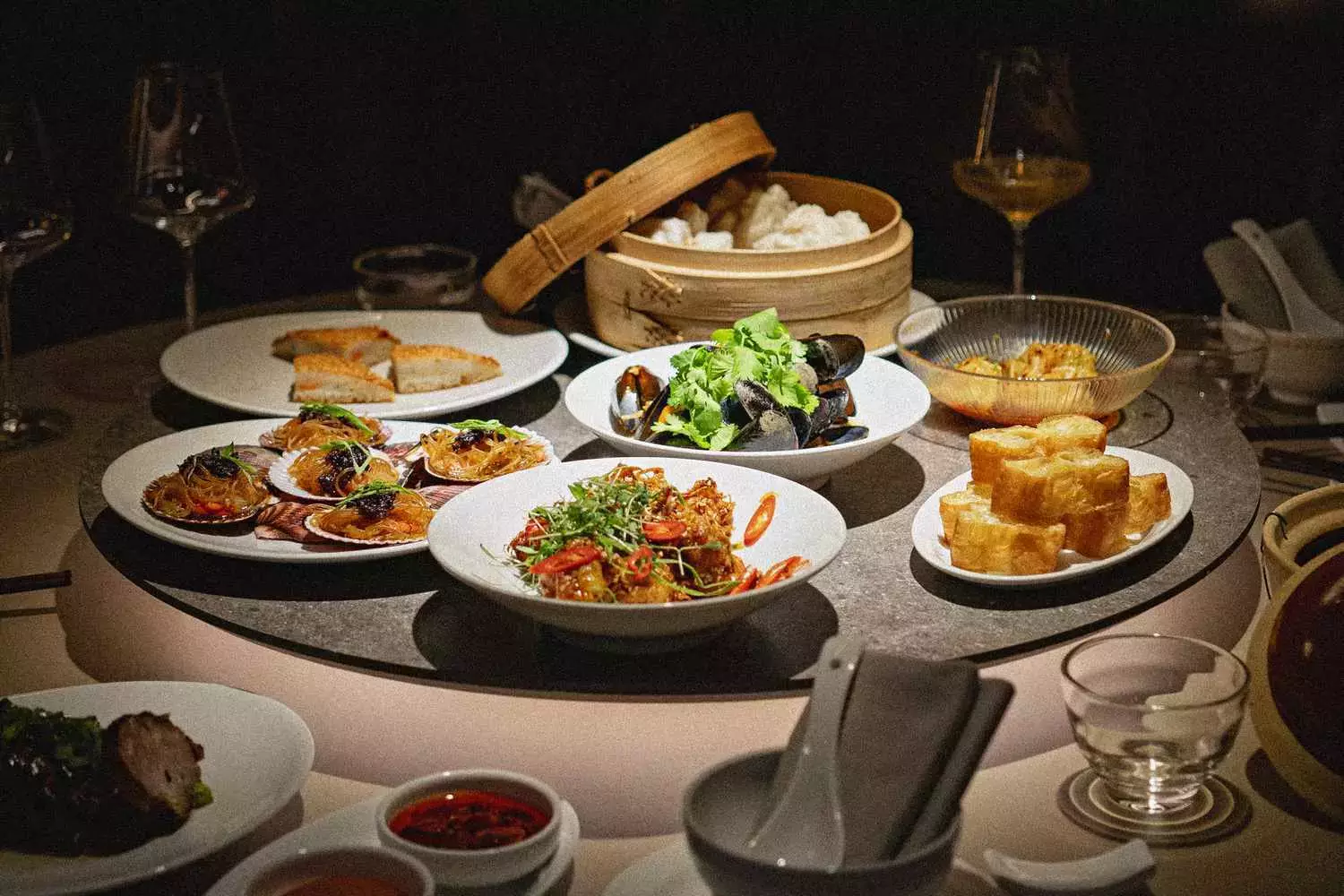The dining landscape of Copenhagen is witnessing a remarkable transformation. As the city embarks on a journey away from its famed New Nordic roots, a plethora of international flavors and culinary traditions are taking center stage. Restaurants like Goldfinch, helmed by Australian chef Will King-Smith and his partner Megan Leung, exemplify this trend by marrying traditional Cantonese cuisine with modern Danish sensibilities. This fusion is not only refreshing but also indicative of a culinary renaissance that embraces diversity rather than adhering to a single narrative.
At Goldfinch, diners are treated to an array of enticing dishes that could easily transport them across the globe. The bustling atmosphere is filled with steamer baskets showcasing delicate scallop and sesame toasts, while crispy shrimp seasoned with garlic and chile beckon from the side. Unlike the typical high-end dining experiences in Copenhagen, Goldfinch offers something novel: the absence of ubiquitous foraged ingredients or sourdough served with elaborate butter. For many patrons, this break from tradition is invigorating.
Filling the Void of Diversity
King-Smith identified a significant gap in Copenhagen’s restaurant scene when he and Leung chose to open Goldfinch. Despite the city’s reputation for seasonal New Nordic cuisine, a lack of representation for international flavors became apparent. This realization echoes the experiences of many chefs who, after training in top establishments like Noma and Geranium, are now anchoring their culinary journeys in their cultural roots.
The evolving culinary paradigm in Copenhagen is underscored by the practices of chefs like Youra Kim. After honing her craft in French kitchens, she discovered the strengths of her Korean heritage, especially during a pivotal moment at Noma where she prepared a Korean-style staff meal. This led her to establish Propaganda Kitchen and Wine, a venue celebrating Korean flavors while seamlessly incorporating Nordic elements. Dish pairings like beef tartare with seasonal fruit showcase how crosscultural inspiration can reimagine a dining experience while still honoring a chef’s roots.
Another emblematic figure in this movement is Edward Lee, whose Japanese-inspired restaurant, Gaijin, underscores the blending of culinary techniques. Drawing from his experience at Jordnær, Lee fuses Japanese flavors with locally sourced Danish ingredients, creating a unique menu that reflects a globalized approach to cooking. His dishes, focusing on seasonal yakitori and delicate broths, make a compelling case for how chefs can honor both their training and heritage while pushing the envelope of traditional cuisine.
Likewise, Jonathan Tam’s Jatak is a testament to this movement’s versatility. The Canadian native, after mastering techniques at Noma and Relæ, embarked on creating a dining experience that pays homage to Cantonese and Vietnamese culinary traditions. By utilizing local Danish produce in his dishes, Tam demonstrates how culinary innovation can arise from collaboration between diverse flavors and ingredients, underscoring a growing acceptance and celebration of multicultural dining.
The Essence of Tradition Reimagined
The culinary narrative in Copenhagen would be incomplete without acknowledging Kristian Baumann’s Koan. Baumann, who has an intricate connection to both Danish and Korean cuisines, has crafted a restaurant experience that serves as an homage to his heritage. His inventive dishes often reinterpret traditional components, such as the conventional sourdough bread course, transformed into kkwabaegi—a Korean twisted doughnut garnished with pine salt and served with rich cream. These thoughtful creations encapsulate the essence of how emotional ties to food can influence contemporary dining.
Danish diners are increasingly showing enthusiasm for this shift towards diverse culinary experiences. Restaurants such as these are not merely establishments to consume food; they are spaces where cultural narratives are expressed, stories are shared, and connections are forged. This progressive attitude marks a significant moment in the evolution of Copenhagen’s food scene, as diners are now more eager to explore a hybridized culinary world.
As Copenhagen’s culinary landscape continues to diversify, it emboldens a new generation of chefs to explore and express their cultural identities. This newfound confidence not only enriches the city’s dining options but also enhances the overall gastronomical dialogue. With each dish served at these restaurants, there emerges an opportunity for celebration and understanding—inviting diners to experience global perspectives through the lens of local ingredients and cooking techniques.
The evolution of Copenhagen’s dining scene is not simply a trend but a vibrant movement that values diversity and innovation. With chefs like King-Smith, Kim, Lee, Tam, and Baumann at the forefront, the city is transforming into a culinary hub where flavors from around the world come together, creating a rich tapestry of experiences that reflect the diverse community itself. As this cultural merging continues, Copenhagen’s identity as a food destination is reshaped, paving the way for an exciting future filled with flavor and creativity.

